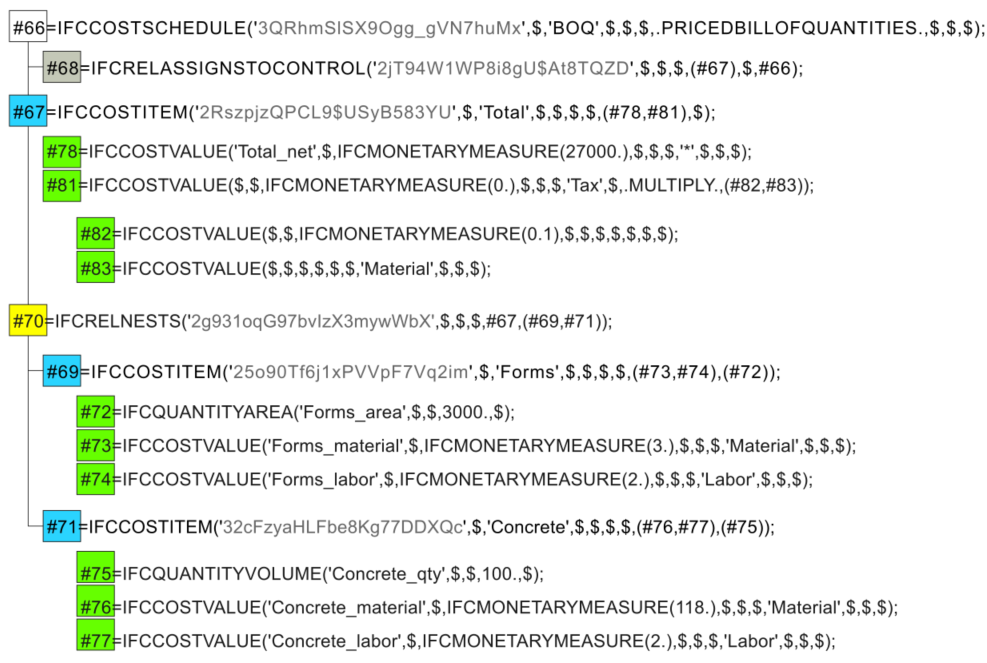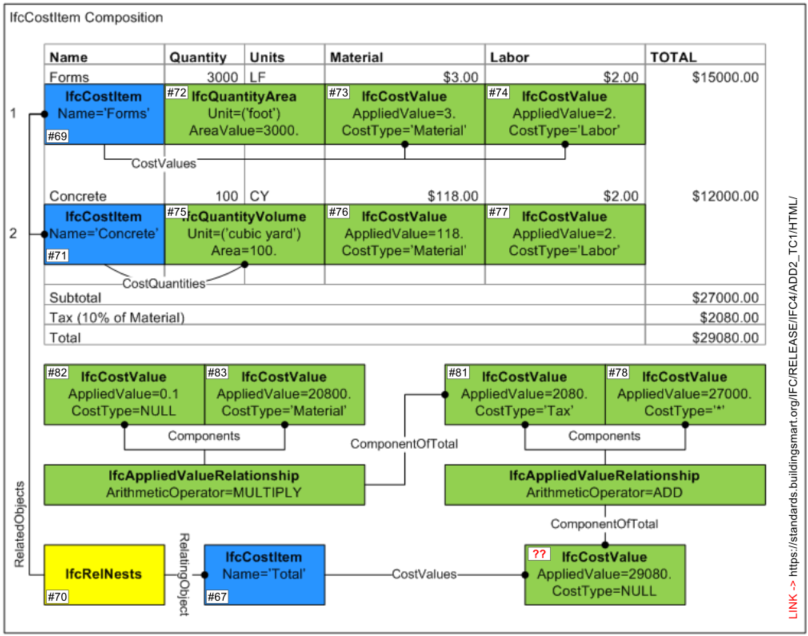A BoQ item's rate needs to operate with its components more than just a sum of them.
@Moult 's 2021 video https://youtube.com/clip/Ugkxuy90qIoNrUhLEgvJzgv4IUfgg1ANMSrR?si=bTG8SHhqfIm-4bP0 , albeit with an old UI, shows how to do it making use of the Category option when it comes to adding a value of a cost item filtering its components based on it.
In the example he calculates a tax 10% only on items classified as Material and added the result to the Total.
It was time for me to implement it and I created a new Cost Schedule/Priced Bill of Quantities and followed the steps in the video.
The diagram used to explain the relations in a IfcCostItem composition can be found at https://standards.buildingsmart.org/IFC/RELEASE/IFC4/ADD2_TC1/HTML/ , I couldn't find the same in the newest IFC4X3_ADD2.
Long story short I did manage to get it but I am not sure I used IFC's best practice in doing it.

I rearranged the elements of my IFC file (attached) to showcase my entries:

and tagged the original diagram to match all of them:

but
-
I am missing one IfcCostValue holding the total 29080 Net+Tax value tagged with ?? in red
-
I couldn't figure out how to MULTIPLY two IfcCostValue in a IfcAppliedValuerRelationship other than using a formula
= Tax(0.1*Material())

instead of a direct assignment showed in the video where cost items have an + icon available next to them.

Question:
Is this the way to do it or I should use a different procedure?
As always, thanks for your patience and excellent support.
